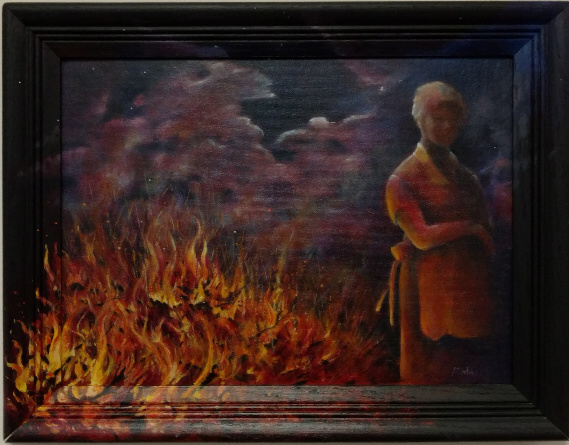What makes good art?

Ageing is a
fairly frequent topic here. Those of us who sometimes feel that we’re teetering
on the brink tend to think about it a lot, even when the AARP mailers don’t
show up every day. Given the paucity of alternatives to aging, we have to deal
with it somehow.
In talking to similarly afflicted friends, I’ve found that there are a couple of common ways of dealing with aging.
The first, the one I’m most familiar with, is fighting a continued and continually-losing read-guard action, trying to reconcile my mind (who still thinks I’m young) with my body (who knows that I’m not).
Then there are those who simply choose to ignore it, like my friend who spent last year building stone columns for his deck and this year getting over building stone columns for his deck.
However, last week I was exposed to still another—and probably better—way to deal with an inevitable problem. Linda and I were visiting my brother and his wife. Ray raises horses, and Marsha paints and teaches art in Boone, NC. The first night we were there we went to the Second Saturday Art Celebration where Marsha and some of her students had work hanging.
A lot of the work had a surreal quality, since Marsha’s assignment to her students was to “paint a dream.” As an example she showed them one of her works, “My Dream at 60.” As you can see from the snapshot above, it’s a figure standing in what appears to be a field of flame. When I first looked at it, I thought I recognized the figure, but since her features aren’t clear, I couldn’t be sure.
I thought about asking Marsha what it meant, but since she believes that the viewer brings his or her own meaning to art, I knew she’d go all Freud on me and ask me what I thought about that. So I snapped a picture with my phone and thought about it. Here’s my analysis, for what it may be worth:
The painting is essentially divided into thirds, with two-thirds of it behind the figure, and one-third including the figure and the blank space in front. The two-thirds, is roiled with tongues of flame, not exactly the common view of the “good old days.” And there are two other points that seem important to me.
One is the calmness of the figure, facing forward. She looks strong and capable. She’s not looking over her shoulder in fear or at the ground in sorrow.
The second is that the painting overruns its borders. It’s easy to see that the flames move from the canvas to the frame, and we can imagine that it extends beyond that. It’s not so easy to see that the “future” side of the painting also extends up to (and probably beyond) the frame. But it’s there.
So what is Marsha’s “My Dream at 60” saying? I believe that it is, as I mentioned, a different and better way of dealing with ageing, one better than actively (and unsuccessfully) fighting it or attempting to ignore it. Marsha’s figure is accepting it and continuing to move on. It is true that there is more behind her than in front of her, and it’s also true that what is in front is unknown and unknowable, but that doesn’t seem to bother her.
There is, I believe, another truth here: our memories of our past don’t include the calm moments. Just as “the good is oft interred with their bones,” our calm moments often sink beneath the memories of the turbulent. Maybe, based on the picture, I’ll make meditating on why we don’t value the calm moments more the second thing on my to-do list.
The first thing will be to try to be more like the figure in the painting: accepting where I am in life and being calm and strong as I move forward.
I will not, however, wear an apron. (That’s the part I couldn’t figure out.)
Marsha told me one time that good art stimulated a reaction in the viewer. It could be rational, or it could be emotional, but it was the connection between the painting and the person. That’s what happened to me with this one.